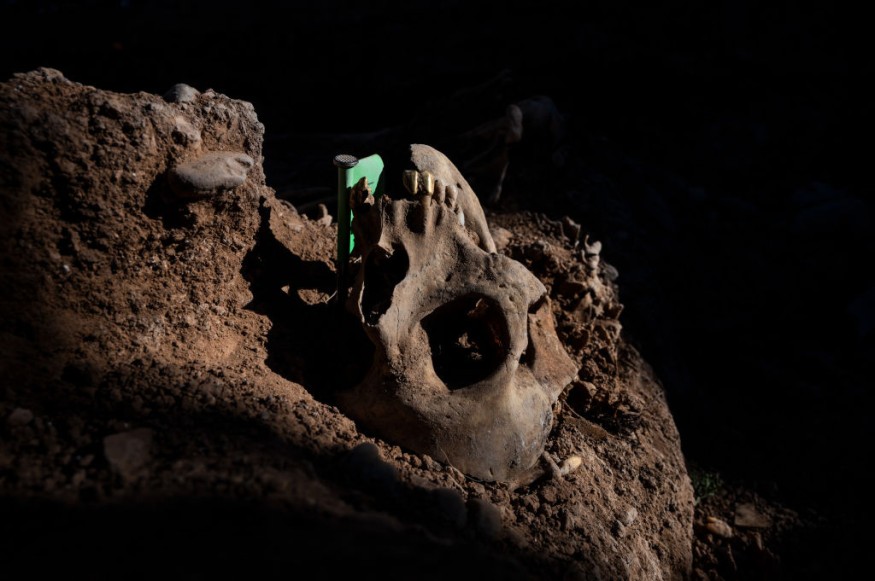
What looks like a murder probe was discovered in a Mexican cave near the Guatemalan border in an area plagued by violent smuggling gangs. The historic discovery was suspected to be the remains of human sacrifices to the Aztec gods thousands of years ago.
Mexican police were stunned to find a pile of 150 female decapitated skulls at a "beheading" crime scene, Daily Star reported.
According to Mirror, the decapitated skulls were first believed to be unfortunate victims of ruthless local gangsters, but after 10 years of extensive examination, it was learned that the women were victims of a beheading ritual to the Aztec gods millennia ago.
"Believing they were looking at a crime scene, investigators collected the bones and started examining them in Tuxtla Gutierrez", said a spokesperson for INAH, the Mexican National Institute of Anthropology and History.
During the Aztec era, the skulls were piled up and displayed in a trophy rack known as "tzompantli". It is believed that the victims were killed between 900 and 1200CE.
A Modern-Day Burial Site
Archaeologist Javier Montes de Paz said that the "modern-day" wake should be investigated by archaeologists, not cops. "When people find something that could be in an archaeological context, don't touch it and notify local authorities or directly the INAH," he said.
What seems to puzzle investigators is that pre-Hispanic skull piles usually show a hole knocked through each side of the skull and are found in plazas not cave. None of the latest find also had teeth.
In 2017, archaeologists discovered a skull rack of more than 600 heads, piled in line at the Templo Mayor, one of the main temples in the Atzec capital Tenochtitlan, what we know now as Mexico City. As Reuters reported in 2017, the skulls in the structure belonged to defeated male warriors, but recent analysis suggests that some belonged to women and children.
Also read : Researchers Discover Broken Tooth of the Largest Carnivore Ever on Earth, and it Isn't the T-Rex
"Gifts to the Gods"
Although experts cannot determine exactly who the individuals are, "we do know that they were all made sacred, that is, they were turned into gifts for the gods or even personifications of the deities themselves, for which they were dressed and treated as such," said archaeologist Barrera Rodríguez in an INAH statement.
Glued together in lime, Aztecs display skulls in smaller racks around Tenochtitlán before transferring them to the larger Huey Tzompantli structure, forming a large inner circle "that raised and widened in a succession of rings," J. Weston Phippen wrote for the Atlantic.
To modern eyes, the tower may seem grisly odd, but to Mesoamericans, the "ritual sacrifice" is a means of keeping the gods alive and preventing the destruction of the universe.
"This vision, incomprehensible to our belief system, makes the Huey Tzompantli a building of life rather than death," INAH said in a statement.
According to old writings, Spanish invaders and their Indigenous allies destroyed parts of the towers in the 1500s, scattering the structures' fragments across the area. The first discovered macabre monument was in 2015.
Related article : Cave in Bulgaria Revealed New Information on Migration of Ancient Humans
© 2025 NatureWorldNews.com All rights reserved. Do not reproduce without permission.






